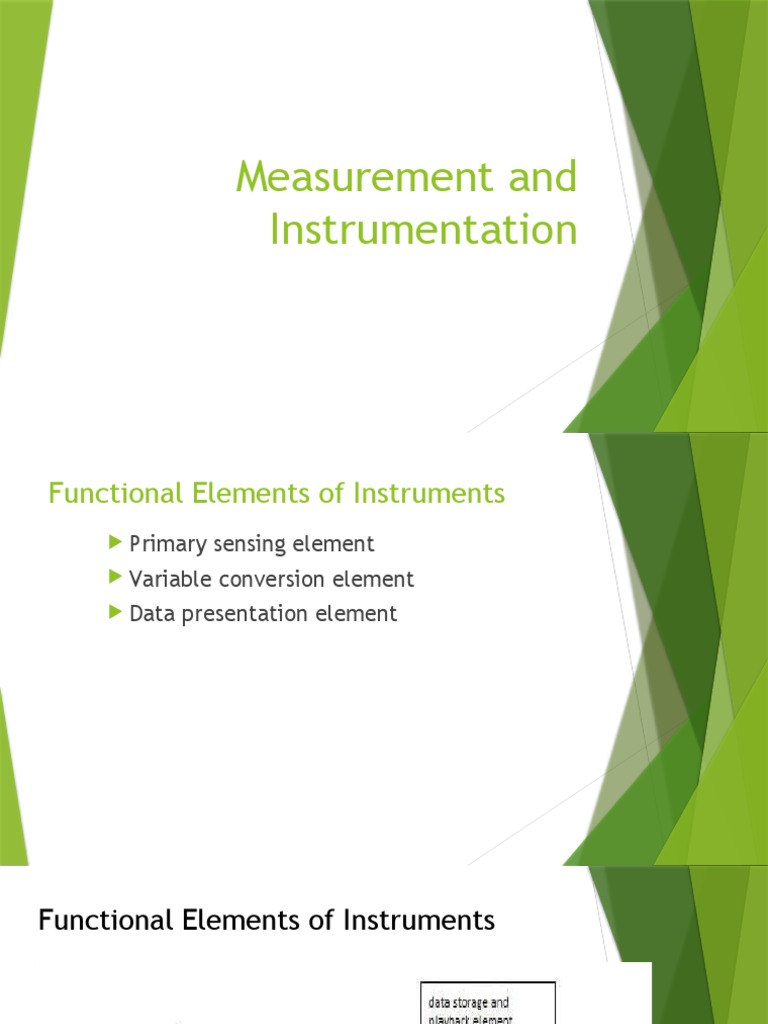Measurement instruments are the unsung heroes of scientific inquiry and technological advancement. They provide the essential means for quantifying phenomena, which enables us to interpret the complexities of the universe. Their operation is not merely a matter of mechanical or electronic functionality; it is an intricate design of principles, precision, and purpose. Understanding what makes measurement instruments work requires delving into an interplay of physics, engineering, and material sciences.
At the core of any measuring device lies a fundamental principle: the conversion of a physical quantity into a readable output. This conversion is effectuated through various mechanisms, which can be broadly categorized into direct and indirect measurement techniques. Direct measurement instruments, such as rulers and thermometers, gauge a quantity by juxtaposing it against a standard. In contrast, indirect measurements, such as those performed by a voltmeter, derive the target quantity from other measurable phenomena, necessitating deeper analytical insight.
The precision of measurement instruments hinges on calibration, a systematic process of configuring the output to align with established standards. Calibration ensures fidelity in measurement, which is critical in fields ranging from engineering to healthcare. Associative accuracy is achieved through comparison with a known reference point, thereby minimizing discrepancies. When one considers the implications of even the slightest errors in measurement, it becomes evident that calibration transcends mere technicality; it is the bedrock upon which empirical data rests.
Another significant factor influencing the functionality of measurement instruments is the underlying technology employed in their construction. Analog instruments rely on mechanical or electro-mechanical systems, utilizing components like springs, levers, and gears. These devices operate through continuous variation and display results via dials or scales. Conversely, digital instruments capitalize on electronics, using sensors and microcontrollers to relay data in numerical format. The choice between analog and digital techniques often involves a trade-off between simplicity of interpretation and the capacity for complex data analysis.
The operational efficacy of measurement instruments is also intricately tied to the materials used in their fabrication. Modern instrumentation frequently employs advanced materials that enhance resilience and sensitivity. For instance, thermocouples, which measure temperature differences, utilize the thermoelectric effect in metals at their junctions. By selecting alloys with specific thermal properties, instrument designers can achieve heightened accuracy across various temperature ranges. Yet, this material choice extends beyond mere functionality; it embodies a rich tapestry of scientific insight that informs real-world applications.
In addition, environmental factors play a pivotal role in the performance of measurement instruments. Temperature fluctuations, electromagnetic interference, and even atmospheric pressure can significantly impact measurement accuracy. Consequently, many modern instruments are engineered to mitigate these variables, incorporating shielding and compensatory elements. This adaptability underscores a critical realization: measurement is not a static endeavor but a dynamic dialogue between instrument and environment.
Instrumentation technology continues to evolve at a staggering pace, thanks to the advancements in microfabrication and nanotechnology. These innovations have enabled the miniaturization of sensors, leading to the development of portable and highly efficient devices. Such progress promises a shift in perspective regarding accessibility to measurement technology, democratizing data collection and fostering a culture of inquiry beyond traditional laboratories. These portable instruments are not only precision tools for professionals but also empower citizens with the ability to engage in scientific exploration.
Moreover, the rise of digital technology has ushered in the age of big data, compelling measurement instruments to adapt to new contexts and functions. Today’s instruments are not merely devices; they are integrated systems capable of complex data analysis and real-time feedback. The assimilation of Artificial Intelligence (AI) into measurement technology allows for the interpretation of vast datasets, unraveling intricate correlations that might elude human analysts. This fusion of technology not only enhances the practicality of measurements but also spurs curiosity and encourages a deeper understanding of the phenomena being studied.
Despite the sophistication of contemporary measurement instruments, the fundamental questions remain: How do they achieve reliability? What principles govern their construction? At the heart of this inquiry lies an appreciation for the delicate balance between theory and application. Instruments do not exist in isolation; they become meaningful through the context of their usage. The convergence of theory, experimental validation, and technological advancement renders measurement instruments as vital tools for both scientific and everyday applications.
Ultimately, the ability of measurement instruments to work effectively is a testament to human ingenuity and our relentless pursuit of knowledge. They serve as bridges connecting the abstract world of concepts with tangible reality, allowing us to quantify the unquantifiable and understand the intricacies of our environment. As we continue to explore the boundaries of scientific achievement, the ongoing evolution of measurement instruments will undoubtedly shape not only our understanding of the universe but also our capacity to engage with it in profound and transformative ways.










